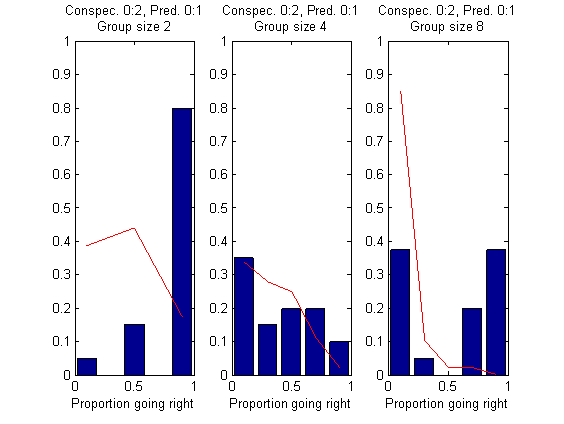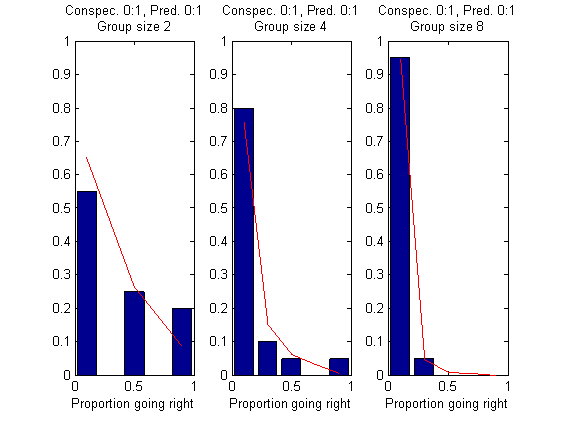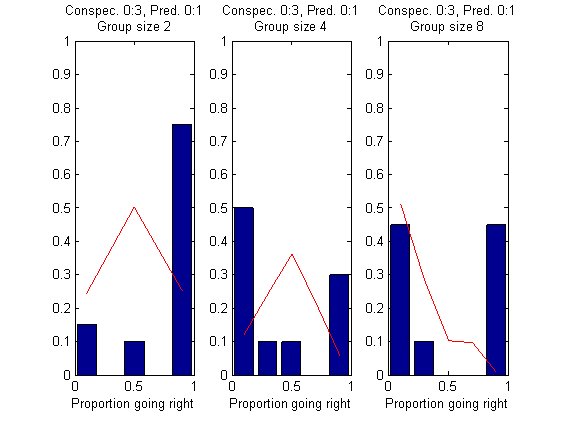>> load(‘c:\hipertec\collectivebehavior\bayesiano\datos_wardetal.mat’)
I use the parameters found yesterday as optimal ones:
>> params=[0.5271 0.9003 0.4316 0.5311 ];
Now, I use the following simple rule: When the predator is present, the prior probability of predator is one. True, this will result in probability 1 for that side, no matter what other fishes do. But we may still have some fishes going towards the predator, due to the gaussian noise in the decision. Also, the probability of going towards the predator side increases the more fish go that way. One interesting (and probably unrealistic) prediction of this model is that the number of replicas avoiding the predator have no effect, because the probability for that side is already 1.
Results of the model are not terrible. Some are remarkably better than those of Ward et al. 2008 (Figure 4). In particular, from the four figures below, Fig. 1, Fig 2B, Fig 3A,B work better than Ward et al. Unfortunately, Fig. 2A and Fig. 4 work clearly worse.




Note that we still have room for improvement: First, the model’s parameters were fit only for the case without predator. Second, Ward et al. fit the parameters separately for the cases with and without predator, so at this point they have twice as many parameters as us. In fact, they use an experiment to fit their parameter r:l reflect the presence of the predator, and we have not done such a thing (we just set the prior to 1).
Another possibility is to introduce the bias in the random number instead of in the prior. At this point I find this option less elegant, because I still do not see where exactly that random number might come from.
Leave a comment